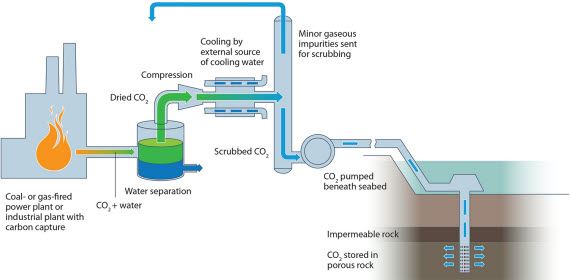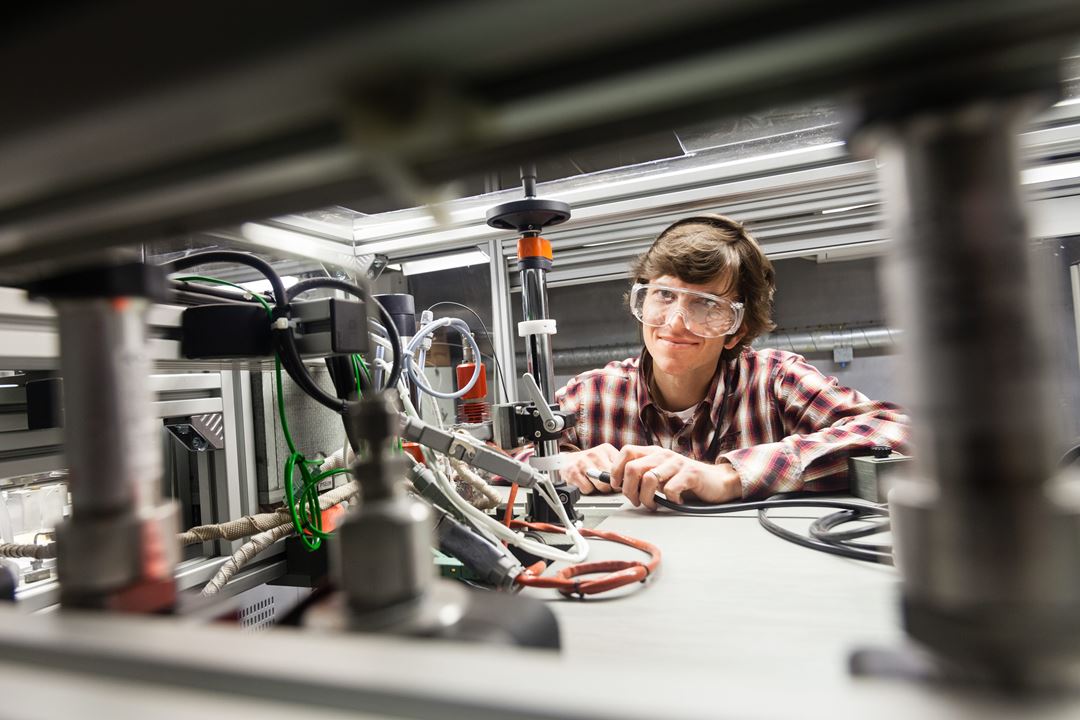by Mona Jacobsen Mølnvik, Reserach Director, SINTEF Energy Research,
Svend Tollak Munkejord, Chief Scientist, SINTEF Energy Research
Cato Dørum, Senior Scientist, SINTEF Materials and Chemistry
If CO2 capture and storage (CCS) is to make its breakthrough as a way of mitigating the effects of climate change, something more than efficient capture and secure geological storage will be needed:
We also need to be able to transport huge quantities of CO2 safely and cost-effectively.
The Norwegian research sector is now doing its bit to produce the knowledge that this stage will require.
IMPACTS: a European Union project
In a CCS future, although some of the captured CO2 from factories and coal- and gas-fired power plants will be sent to the storage sites by sea, most of it will be transported by pipelines overland and on the seabed.
Norway has won a leading role in pipeline transport of CO2, and SINTEF has recently been given the task of coordinating the European Union project IMPACTS, which deals with this topic.
This is one more example of how the efforts of the FME BIGCCS research centre – a research centre established by the Research Council of Norway – are resulting in international activity.
Cost-effective design and efficient operation
CO2 pipelines exist all over the world. In the USA they go to oil-fields, where the gas is used to enhance recovery rates. Norway’s Snøhvit, a gas field in the Norwegian Sea, also has a pipeline: the CO2 that is stored in Snøhvit arrives via a 140 kilometre-long pipeline, the longest of its type in the world.
So why do we need to do any more research when the pipelines have already been laid and are in operation?
Well, because according to the International Energy Agency (IEA), the world will have to deal with no less than seven billion tonnes of CO2 a year by 2050, if we are to reach our goal of a global temperature rise of no more than 2oC.
That will involve laying many, many miles of pipeline, which means that transportation will make up a significant proportion of the total costs. This is why it is important that pipes and equipment should be produced using cost-effective materials, that the pipe-walls are not unnecessarily thick, and that the systems are operated as efficiently as possible.
Back to the drawing board
All this makes it necessary to go back to the drawing board, as the recipes from the natural gas sector cannot just be copied, because CO2 in a pipeline behaves differently from natural gas.
If the designers of CO2 pipeline systems are to develop safe systems without over-dimensioning them in order to be “extra safe”, they will need numerical tools that can be fed with knowledge based on the results of research.

|
CO2 pipeline transport – from capture site to depository: |
Gassy liquid
Both natural gas and CO2 are compressed prior to transport, which means that the pressure in a pipeline is more than 100 atmospheres.
Under these conditions, natural gas stays a gas, while CO2 becomes a gassy liquid.
One of the consequences of this is that CO2 becomes extremely cold when its pressure drops. In order to be able to choose the right materials, we need to have detailed knowledge of this process.
If a gas power plant reduces its electricity production at one end of the pipeline, the supply of CO2 will drop, and so will the pressure in the pipe. Then some of the CO2 already in the line may turn back into gas. Good knowledge of the flow regime that results is in turn of decisive importance for the operation of the system.
No to propagation of cracks
People who design or operate CO2 pipelines have no desire to see them starting to leak.
If a leakage does in fact occur, for example following an accident with a mechanical digger, the crack must not be allowed to spread. This is because CO2 is poisonous in high concentrations, like many other substances, and because capture, transport and storage will all have to be shut down if the pipeline needs to be replaced.
For this reason, we have developed a numerical model that predicts whether or not a crack will propagate. This depends on both the flow of CO2, which determines the pressure force on the pipeline, and the resistance of the steel to crack propagation.
What is special here is that we simultaneously involve flow and steel in our calculations.
Drying and scrubbing
Before the Snøhvit pipeline came, we determined how much water can be dissolved in CO2 before it precipitates in the form of droplets. We need to know this in order to find out how much the CO2 will have to be dried before it is sent off through the pipeline. This is an important aspect, because CO2 dissolved in water produces carbonic acid, which can rust steel pipes.
Many aspects of the behaviour of CO2 in pipelines, including the risk of water precipitation, are determined by how clean it is. For example, the CO2 contains small amounts of methane and nitrogen from the source of the emissions. An important common denominator of the research projects has been to identify how such impurities affect the behaviour of the CO2 in the pipeline.
Methane and nitrogen can be removed by “scrubbing” before the CO2 sets off on its journey through the pipeline. One of our aims is to acquire knowledge that can be used to decide just where the boundary between necessary and unnecessary scrubbing lies.
Important contribution
All of this points in the same direction: better knowledge of how CO2 mixtures flow in pipelines will make a much-needed contribution to large-scale reductions in the amount of CO2 released to the atmosphere.
This article has already appeared (in Norwegian) in Dagens Næringsliv, Friday 19th April, 2013.

